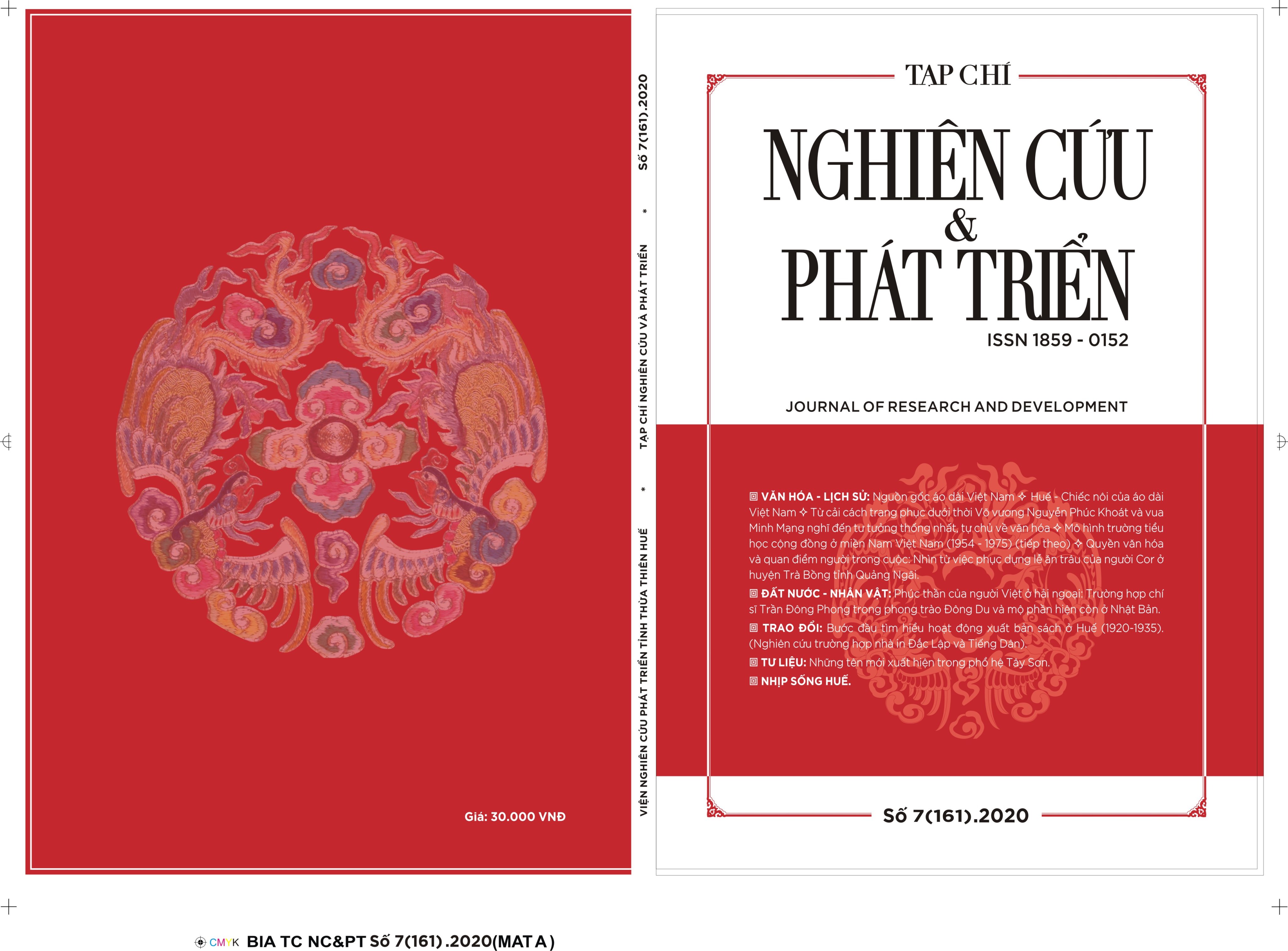From the costume reform under the reigns of Lord Võ vương Nguyễn Phúc Khoát and Emperor Minh Mạng for unified ideological thinking, cultural autonomy.
Abstract
FROM THE COSTUME REFORM UNDER THE REIGNS OF LORD VÕ VƯƠNG NGUYỄN PHÚC KHOÁT AND EMPEROR MINH MẠNG FOR UNIFIED IDEOLOGICAL THINKING, CULTURAL AUTONOMY
Áo dài (Traditional dress) has long been the traditional costume, the pride and also one of the cultural symbols of the Vietnamese nation. In looking back its history of formation and development, Huế Ancient Capital could be proud of being the cradle that gave birth to the áo dài with the special role of Lord Võ vương Nguyễn Phúc Khoát (who was of great merit in reforming the costume of Cochinchina since 1744, and gave birth to the “Áo dài Ngũ thân” - the Five-flaps dress), and that of Emperor Minh Mạng (who popularized, advanced and honored it to be the National costume of Vietnam). This writing analyses the historical context and the details of costume evolution under the reigns of Lord Võ vương and Emperor Minh Mạng to prove the fact that the mentioned costume evolution was to reflect the unified ideology and cultural autonomy of the Dynasty. Additionally, the evolution helped create an important basis for its formation and development, due to this one could gradually become the official National costume of Vietnam.

